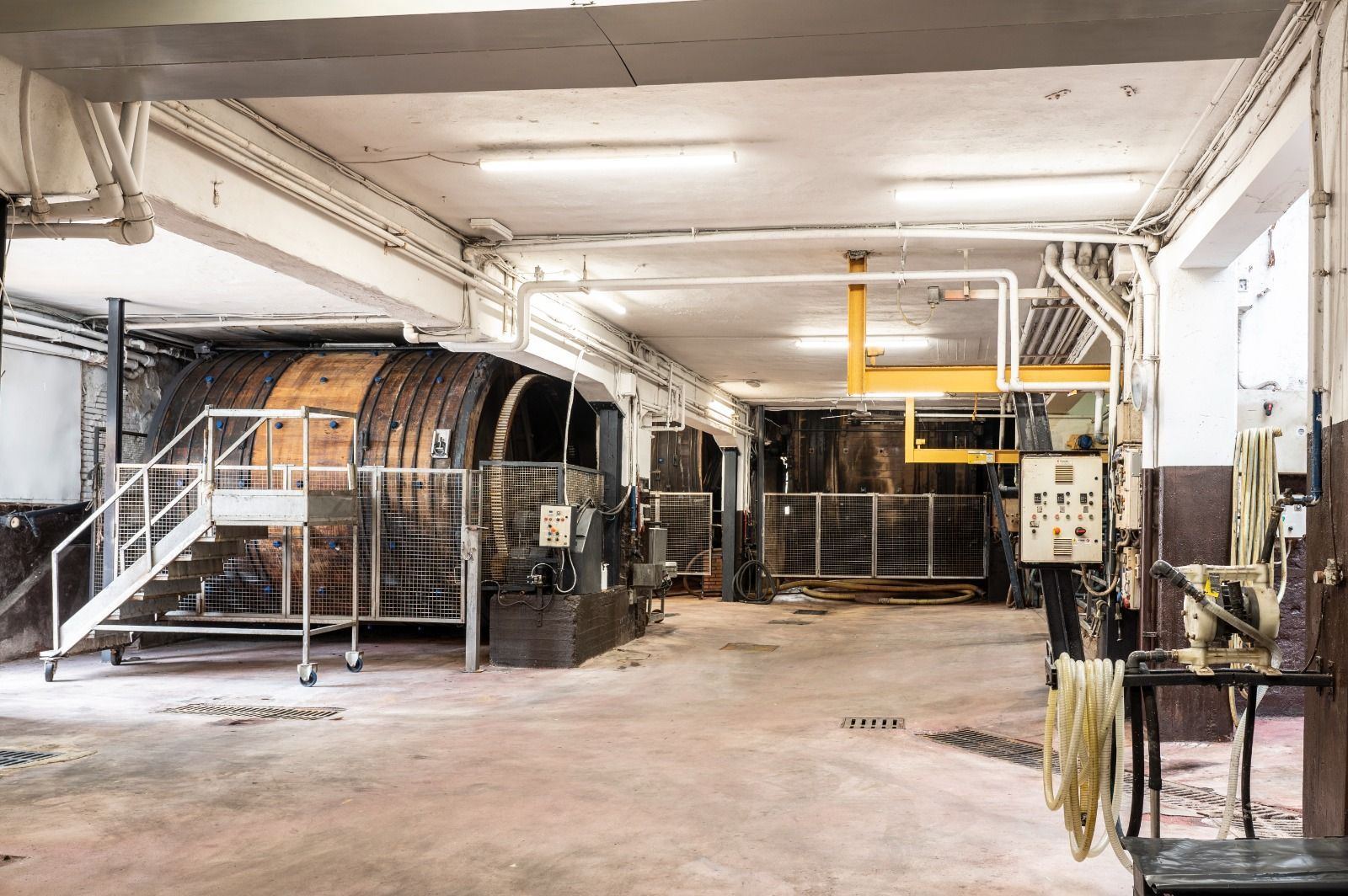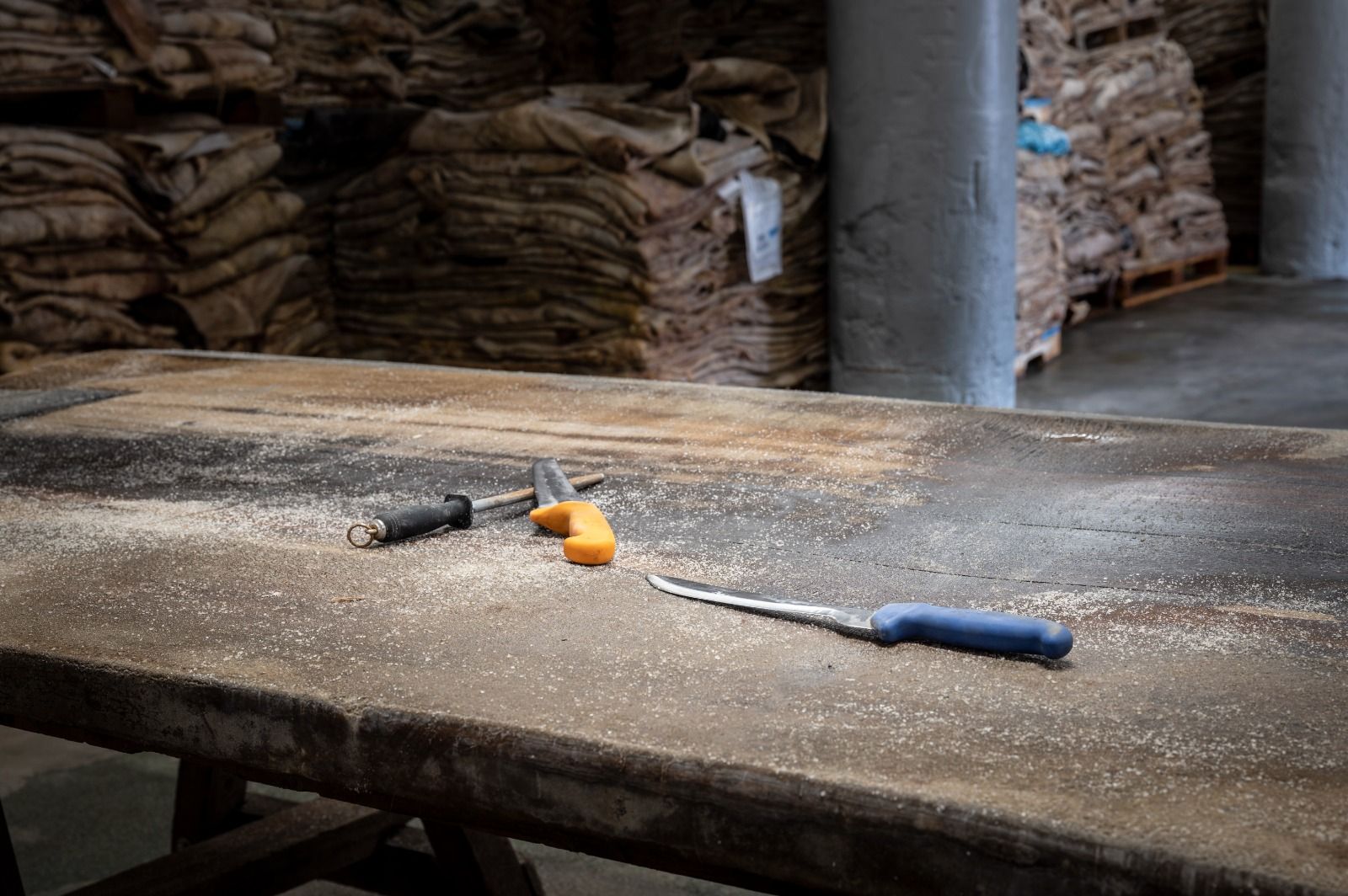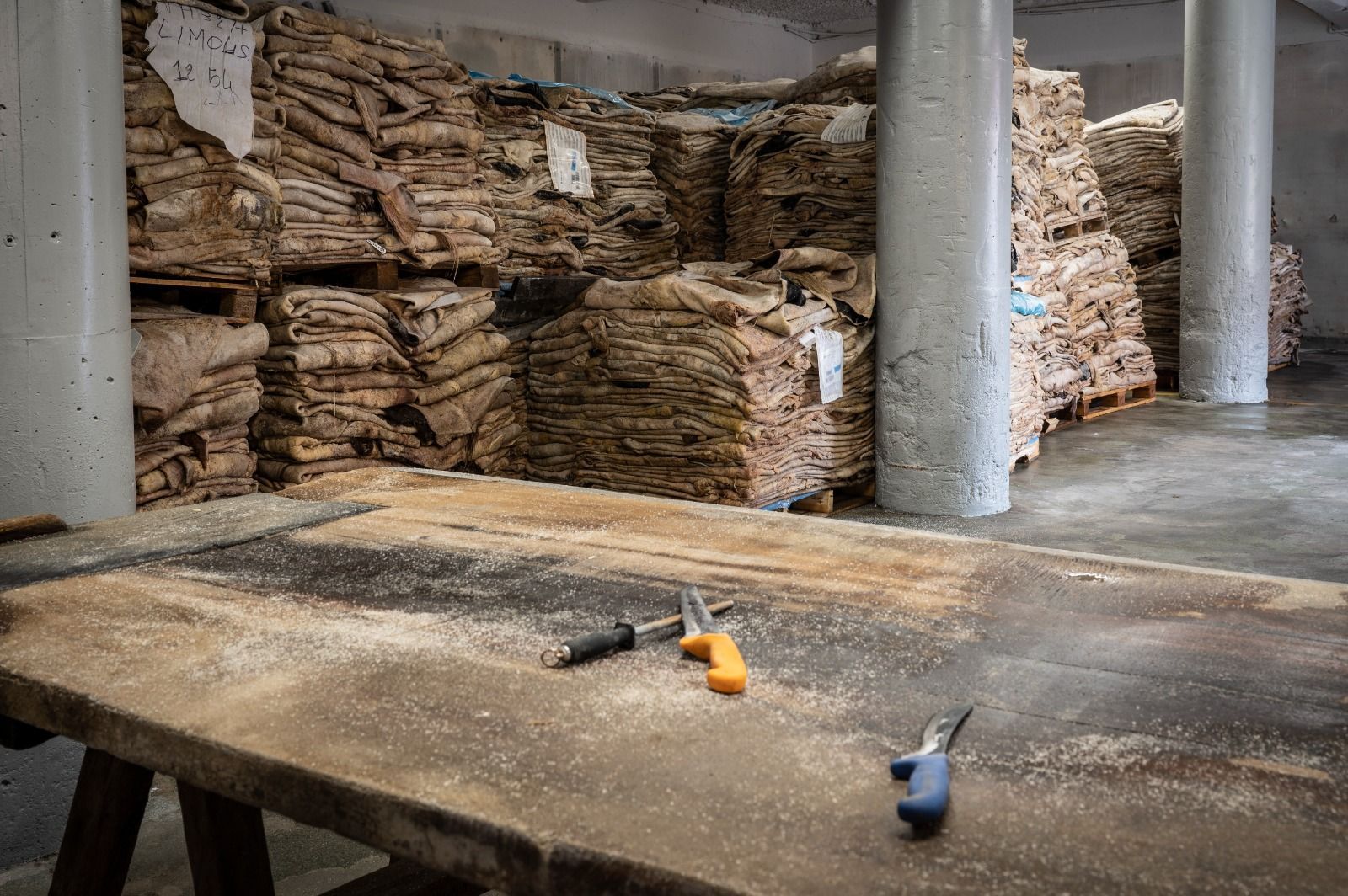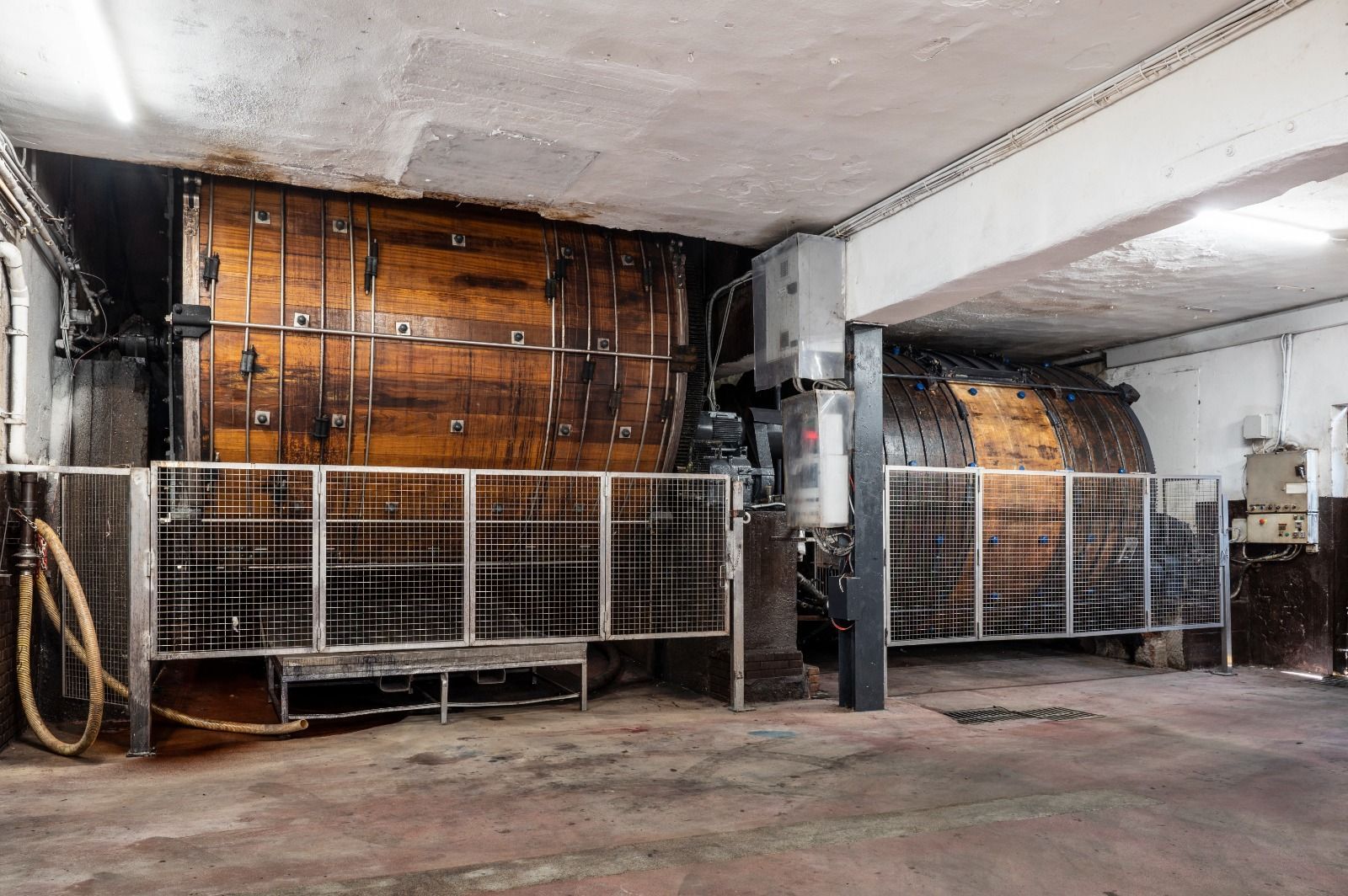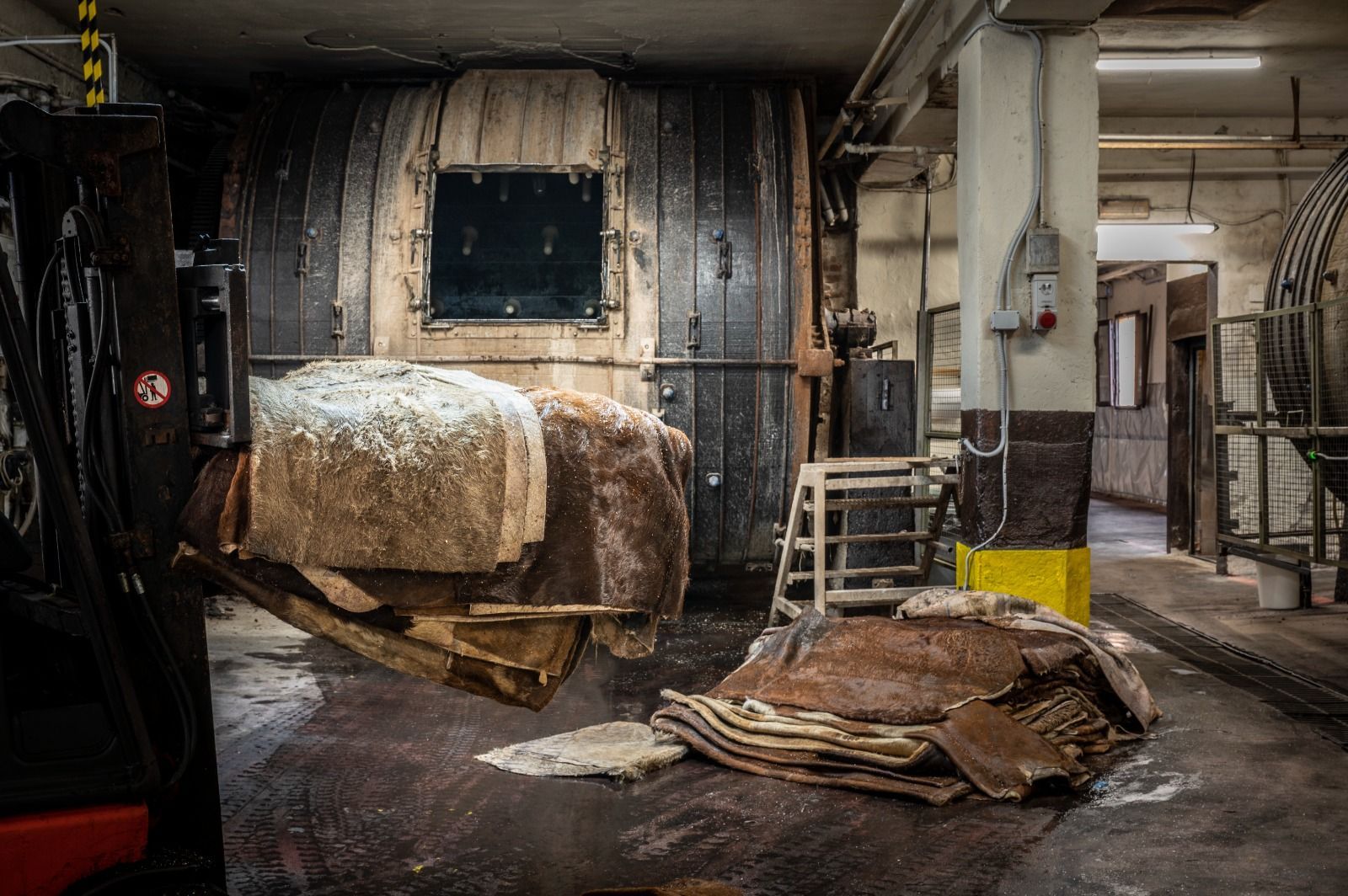Production of Leather for Footwear in Santa Croce sull'Arno
Leather has always been the material of excellence for the creation of high-quality footwear.
The Art of Crafting Leather Shoes
A Unique Material for Comfort and Durability
The production of leather for footwear is an ancient craft that combines tradition, expertise, and technology in a fascinating and complex process. Leather has long been considered the ideal material for high-quality footwear, thanks to its exceptional resistance, breathability, and ability to adapt perfectly to the shape of the foot. This makes each pair of shoes unique, offering comfort and long-lasting durability. Every leather shoe produced is the result of a careful balance between innovation and environmental responsibility, creating not only excellent products but also ones that respect their origins.
The Stages of Leather Production for Footwear
The production of leather for footwear begins with a careful selection of raw hides, typically of bovine, ovine, or caprine origin. These hides undergo various treatments to enhance their durability and aesthetics. The main stages of the production process include:
Preparation of the Hides
The raw hides are cleaned and treated to remove impurities and hair. This step is essential to ensure a high-quality final product.
Dyeing and Finishing
After tanning, the leather is dyed and treated to enhance its appearance and wear resistance. This stage may include polishing, the application of waxes, and embossing to achieve unique textures.
Cutting and Shaping
Once ready, the leather is cut according to the footwear design and undergoes either artisanal or industrial processing to create the final product.
Tanning
The tanning method determines the final characteristics of the leather. There are two main types of tanning:
- Vegetable tanning, which uses natural tannins extracted from plants to produce durable and biodegradable leather, ideal for handcrafted and luxury footwear.
- Chrome tanning, which employs chromium salts to give the leather softness and flexibility, making it suitable for sports and mass-produced footwear.
Quality and Sustainability in Leather Production for Footwear
In recent years, the leather industry has made significant investments in sustainable solutions to reduce its environmental impact. The use of natural products in vegetable tanning, water recycling during processing, and the adoption of energy-efficient technologies are some of the key aspects ensuring an eco-friendly production process.
Beyond sustainability, the quality of leather depends on artisanal craftsmanship and the selection of the finest raw materials. The most renowned companies combine
traditional expertise with modern techniques
to produce a material that guarantees comfort, resistance, and longevity.
In conclusion, the production of leather for footwear is a constantly evolving sector that preserves artisanal tradition while embracing innovation and sustainability. Thanks to attention to quality and detail, leather remains one of the most prestigious materials for the creation of footwear designed to stand the test of time.









